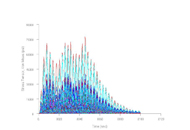
Finite Element Modeling, Analysis, and Reporting
The loads make all the difference.
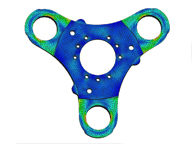
Traditional Linear Static Analysis
Most engineered products have loads that are relatively simple to understand and are loaded within the elastic range of the material. For steady state loads, and isotropic materials, most analyses can be turned around in a matter of weeks. These problems generally consist of a number of steady-state load cases stemming from applied or inertial forces, and outputs consisting of displacements, stresses, strains, and interface loads. Structure, Incorporated performed a linear static analysis on this helicopter rotor hub, at left.Dynamic Analysis
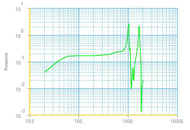
Transient Analysis
Sometimes, the response of a structure in the time domain needs to be understood. If the loads need to be described by a function, such as pressure decay, or shock, than the response can be integrated as a function of time.
Frequency Domain
Alternatively, the behavior of the structure needs to be understood as a function of frequency. This can be as simple as determing the natural frequencies of a part or assembly, or as complicated as calculating the three sigma response to a power spectral density function.Thermal Analysis
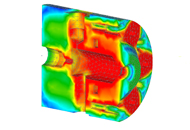
Steady-State or Transient
There are many reasons that the thermal analysis of a product can become neccessary. Sometimes, the path of conduction can be indeterminate. At other times, convection and radiation can play a significant role. We can analyze the steady state situation, or, we can determine the temperature profile as a function of time, as in the case of this rocket engine ignitor, above.
Nonlinear Analysis
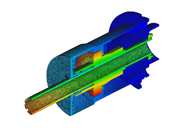
Shock, Impact, and Motion
Some problems involve highly nonlinear behavior, such as shock, impact, contact between two bodies, or large amounts of motion. At Structure, Incorporated, the aerospace ram-air turbine actuator above was modeled using extensive contact between parts to determine the cause of the observed failure modes in service due to repetitive actuation.
Case Study
High-Power Optical Amplifier
Structure, Incoporated was retained to analyze the dymanic behaviour of a High Power Optical Amplifier that was part of a satellite payload. Only three examples of certain optical components existed, meaning that failure was not an option during either qualification testing or during actual on-launch performance. Although shock loadings due to stage seperation and a random vibration profile from engine noise were known quantities, our client needed an acceleration time-history at various circuit board locations within the amplifier in order to fully qualify their components. We derived a mathematical transfer function to simulate a transient signal that would result in the known loads (defined in the frequency domain) and executed the analysis.
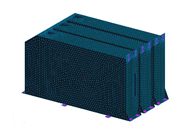
HPOA Circuit Board Enclosures
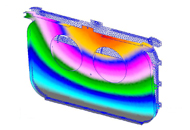
Circuit Board Mode Shape
